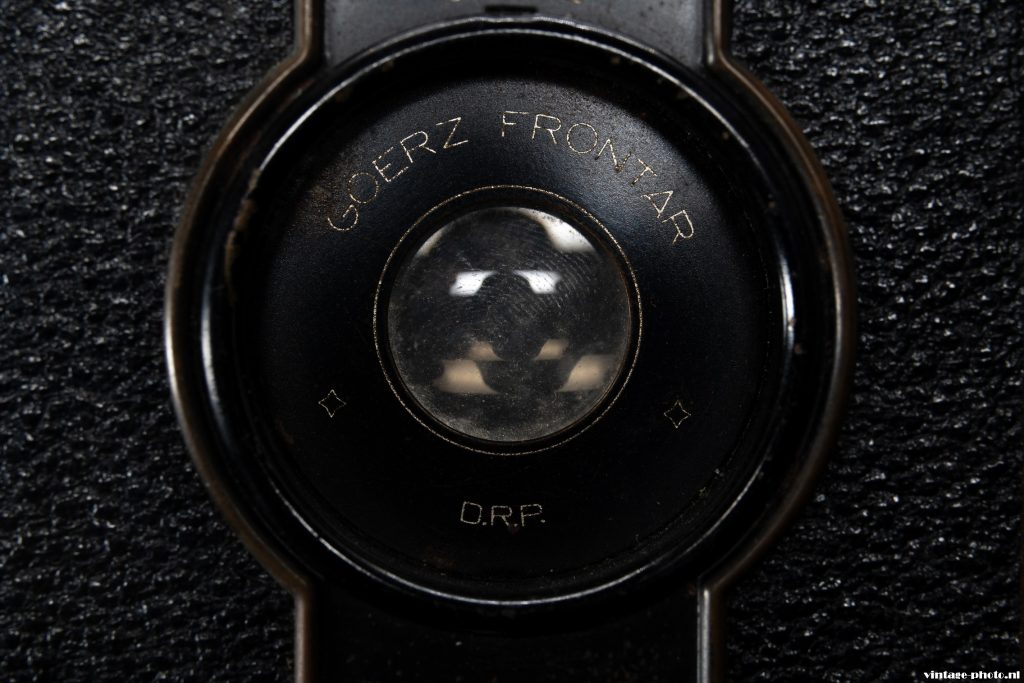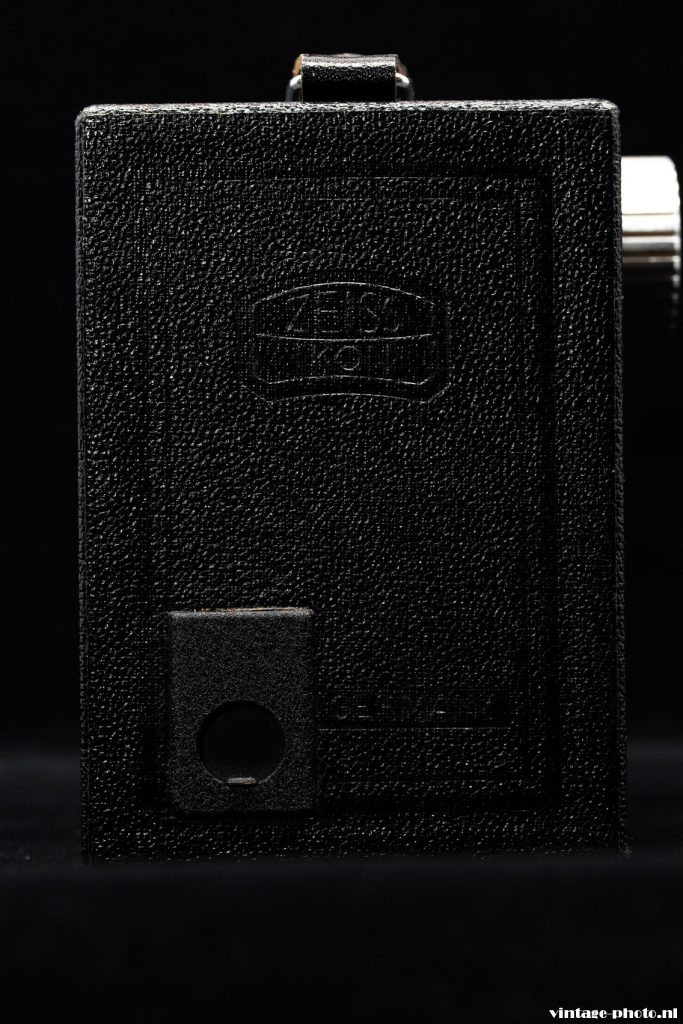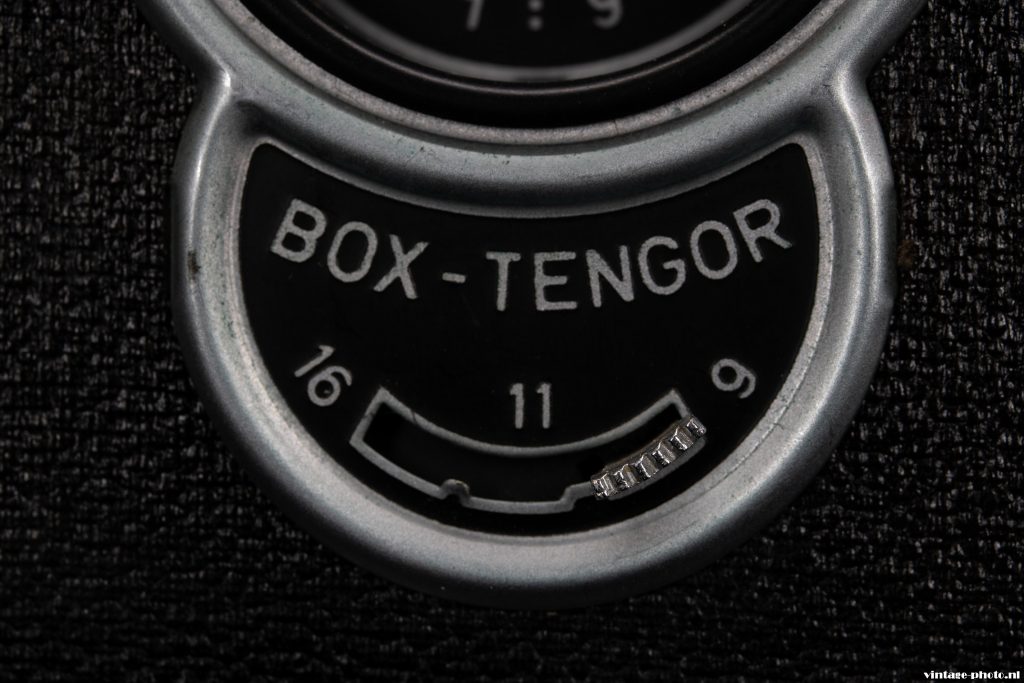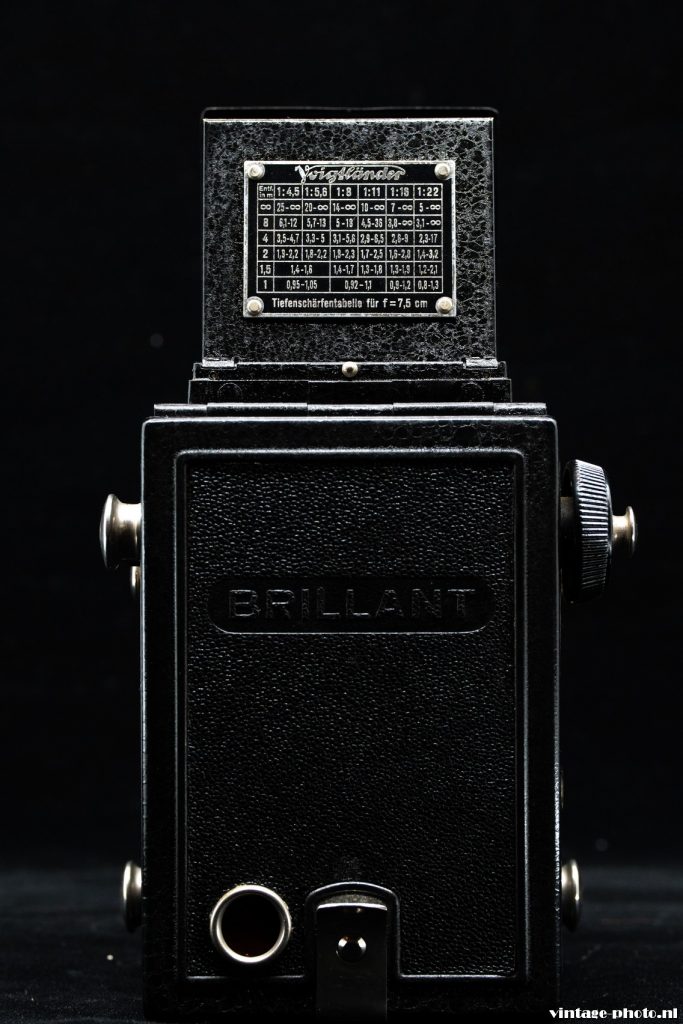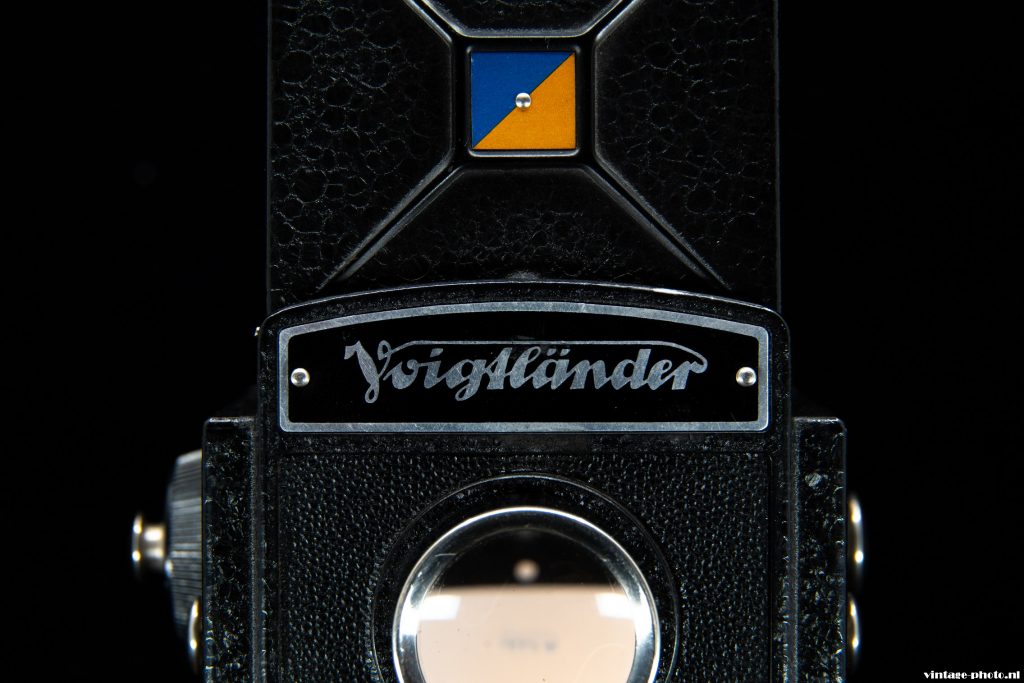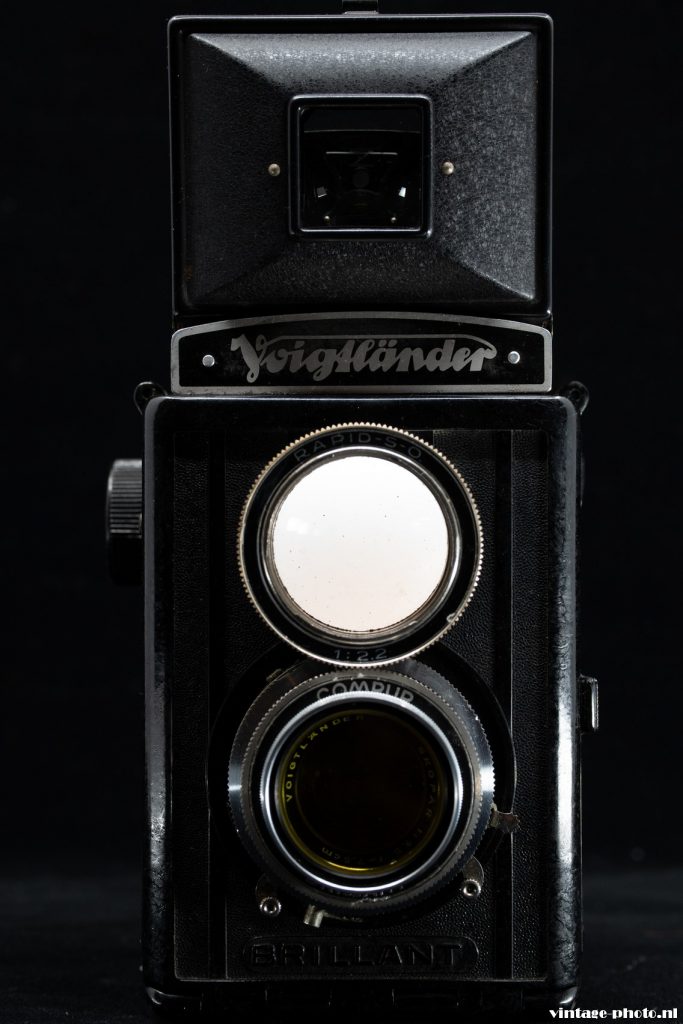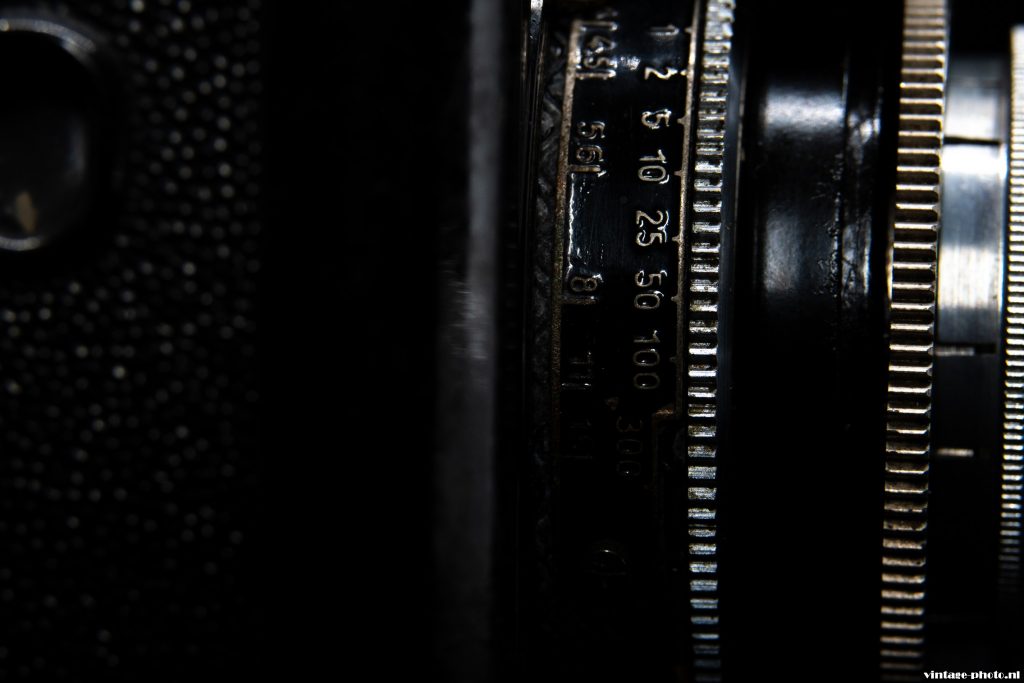Not everyone wants or benefits from an advanced camera. And for a lot of people, a camera is an expensive and luxurious product, especially in the middle of the last century. The well-known manufacturers Zeiss Ikon and Voigtlander had found something for that: a camera for beginners, without bells and whistles. A square box with a lens.
Try explaining to millenials today what a shutter speed and an aperture are and how to set them for in order to make a good picture. In a time when everything goes automatically through your smartphone, there is no need for complicated settings, although that is the fun of photography and usually does lead to better pictures. But in the 1940s, cameras with automatic settings did not exist. Almost everything had to be set manually, and that was far too complicated for many users. In order to broadly stimulate camera sales among consumers, simplicity was chosen. How could you make a camera ‘stupid’ while still keeping good pictures? Making it smarter was not really possible, so it had to be made simpler and to the point. During my first holiday long time ago, I was allowed to borrow my father’s manual SLR camera. He, too, saw no point in quickly explaining to his young son how to set up the camera. He only taught me to change the film and said: ‘make sure your aperture ring points to 5.6 and your shutter dial to 125s. Then you’re good in most situations’. Comparatively, manufacturers marked certain shutter speeds and aperture combinations in red for ease of use: a sort of failsafe. Do not think, just do.
Box cameras were in this way dedicated to photographic beginners. No advanced possibilities and just aimed at easy use. Zeiss Ikon’s famous Box-Tengor series were more or less already sophisticated models of such beginners cameras, with simple distance and aperture preselection. Different Tengors were offered for the medium film formats 116, 120 and 129. We show a later 54/2 model, ninety years old, with the Goerz Frontar lens. Before that the 54/2 Box camera was already introduced in 1928 and duplicated my many manufacturers. Do not expect a high quality lens, it was (mostly) a very slow two elements lens with 2 or 3 apertures: F11, F16 and F22. Not useable in low light situations. For the focussing the same principle of keeping things simple: you either take a picture with a distance of, in our model, 1-3 meters or from 3 meters to infinity. And the shutter speed was fixed in all situations to 1/25s. To frame your picture, you could use one of the two built-in viewfinders, vertically or horizontally. Depending on the film format (like 6×9, 5×7,5 or 6,5×11 cm), it gave you an idea of what would be visible in the frame. The boxes could be easily opened to insert a film. A red peeping hole told you which framenumber was due.
In 1951 the final model went into production, the 56/2. The camera improved a lot by a more metal design and used a faster Goerz Frontar Achromat f/9, 105mm lens and used close-up lenses for 1-2m and 2-8m which were separately available, and a very useful Flash PC socket. It had one speed shutter M (1/30s) and T. What it also did not lack was double exposure prevention system. It was always the question, was the number in the red window the picture I took or had to take…? A real annoyance at that time. The focussing was expanded to 1–2m, 2–8m, 8m–∞. The Achromat lenses made it possible to use color films. The Tengor boxes were very popular cameras, mainly due to its low price and simplicity. The latest model, the 56/2 enjoyed a similar popularity, but costly with 33 marks, whereas Agfa already started to offering the new Clack film camera that in the end outperformed the Zeiss Ikon Tengor.
A whole different approach, although also in a box version, was chosen by Voigtlander, a more expensive and ambitious brand in Germany. They started even before Zeiss Ikon with the Brillant (not brilliant) series in 1932. The mode resembles the later, popular and high qualityTwin Lens Reflex cameras, but its design and functionally were closer to the box camera from Zeiss Ikon. The Brillant (as shown here in the 1935 model) also uses ‘zone-focusing’ for which one has to estimate the distance to the subject. But to assist this estimate, three situations were marked around the taking lens instead of apertures: Porträt (Portrait), Gruppe (Grouppicture) and Landschaft (Landscape). It made it even more understandable how to set the camera. But the main advantage of the Brillant was the use of a very big and bright mirror viewfinder on top of the box. The image from the upper take on lens was reflected. This could be flipped open for use, as with the latter TLR series.
The early versions all had a metal body, which were replaced by a cheaper bakelite, a polymer in 1937. Interesting fact is the inside accessory holder, a mini storage place for filters. Next to the zone-focusing, a distance scale in meters or feet was available on the lens ring and a depth-of-field scale was provided on top to guide the photographer to make an educated guess of whether the picture will be in focus. Early models had three shutter speeds were provided; B, 1/25 and 1/50s. The slow apertures could be similar to the Zeiss Ikon set at 9 (full aperture), 11 and 22. The model V6 shown from 1937 had an advanced Compur Shutter with respectable shutter times ranging from B up to 1/300s. Also the aperture range was improved with the new Skopar F4,5 lens (4,5; 5,6; 8; 11; 16). The hinged back could be removed to insert film and also here a red viewing window was used as counter for frames. The Brillant was especially popular due to its famous sharp Skopar 75mm lens for 6×6 images.
The next major step took place in 1938, with the introduction of the Focusing Brillant-S. A small opaque spot is added in the brilliant finder to focus on. The viewing and taking lens are coupled outside the body through gears. Zone focussing was obsolete, this could now be controlled and adjusted in real-time by turning the focus wheel and get a visual focus check on a small dot of the ground glass in the viewfinder. The S-model shown had an advanced Compur Shutter with shutter times ranging from B up to 1/300s, but the aperture range was further improved with the faster Skopar F3,5 lens (3,5; 4,5; 5,6; 8; 11; 16). The Box camera soon transformed in a first, sophisticated TLR.
Box cameras are less popular among collectors. They are (too) simple. Such a square box is also not easy to hold. Certainly not to take pictures with it. The Voigtlanders are more advanced because you can shoot from the breast or even the hip. But they remain curiosities. But without this cheap solution, photography would have remained out of reach for thousands. They deserve more respect than just a camera in a box. And the end, with a just a little more luck, they make the same unforgettable memories a any other sophisticated camera.





